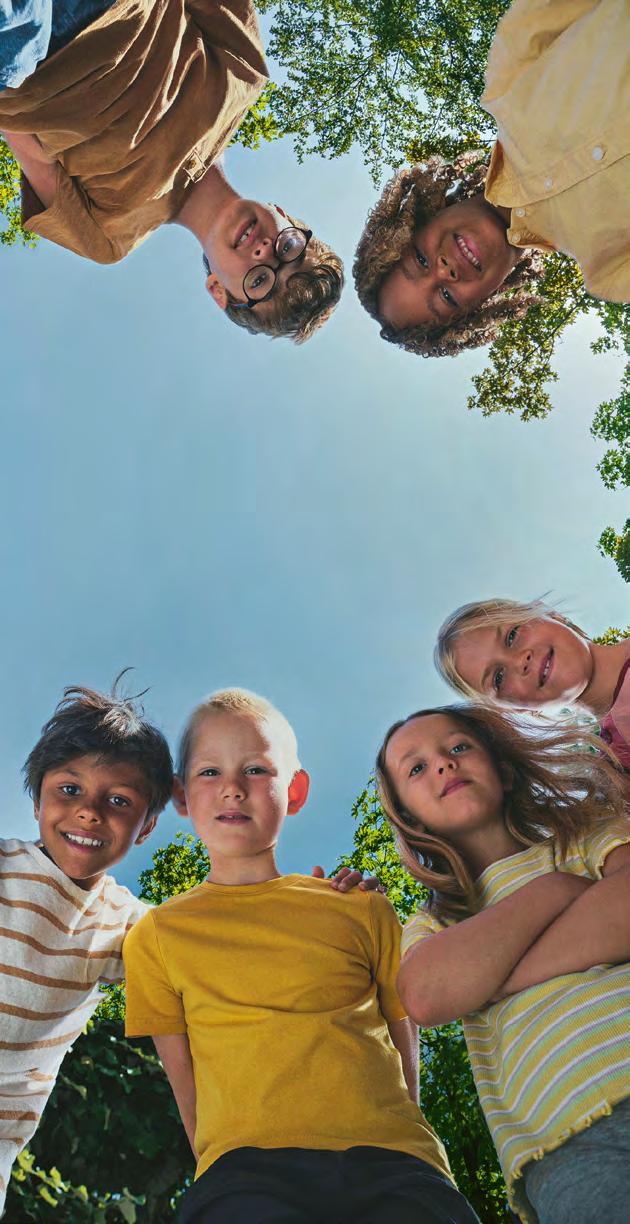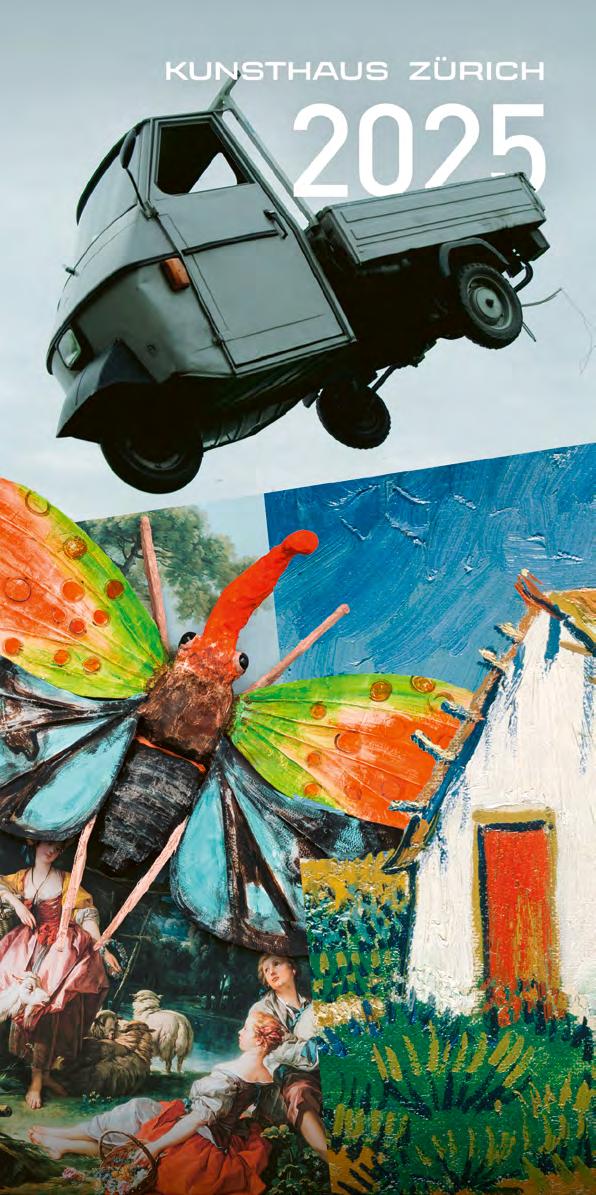

WELCOME TO THE KUNSTHAUS!
Open
Tue / Wed, Fri – Sun 10 a.m. – 6 p.m.
Thu 10 a.m. – 8 p.m. kunsthaus.ch/en/ besuch-planen/besucherinfos
Public holidays 10 a.m. – 6 p.m.
26 / 30 December 2024
Easter 18 – 21 April 2025
1 May 2025
Ascension Day 29 May 2025
Whitsun 7 – 9 June 2025
1 August 2025
26 / 29 December 2025
2 January 2026
Public holidays 10 a.m. – 4 p.m.
24 / 31 December 2024
24 / 31 December 2025
Closed
Mondays (exceptions see above)
25 December 2024
1 January 2025
25 December 2025
1 January 2026
Admission
For current admission prices see tickets.kunsthaus.ch
Events calendar
Current dates and events at kunsthaus.ch/en/ besuch-planen/programm
Directions
From Zurich main station, tram no. 3 or bus no. 31 to the ‘Kunsthaus’ stop
Address and information
Heimplatz, 8001 Zurich kunsthaus.ch
Directorate and administration
Tel. +41 (0)44 253 84 84 info@kunsthaus.ch
Library
Rämistrasse 45, 8001 Zurich
Mon – Fri 1 p.m. – 6 p.m.
Tel. +41 (0)44 253 85 31
Collection of Prints and Drawings
Study room
Mon – Fri by appointment
Tel. +41 (0)44 253 85 39
Publisher
Zürcher Kunstgesellschaft
P.O. Box, 8024 Zurich
Print run: 140,000 copies
Information subject to change
Cover: Details from Roman Signer, Piaggio on Jump, 2003; Monster Chetwynd, Lantern Fly (Pastoral), 2021; Vincent van Gogh, White Cottages at Saintes-Maries, 1888
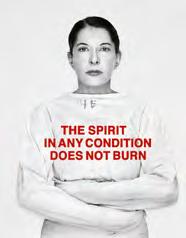
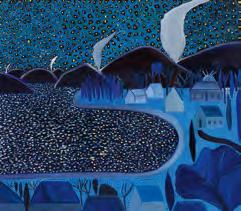
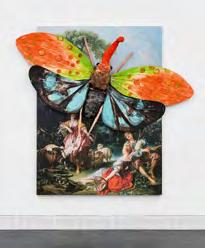
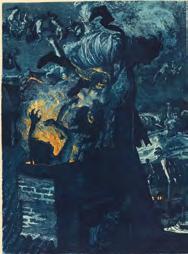
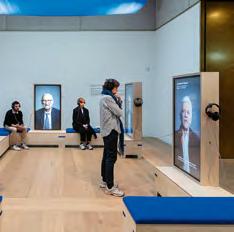
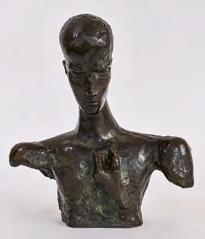
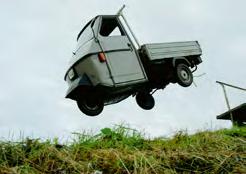
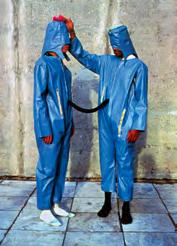
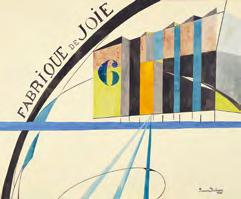
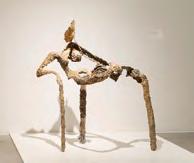
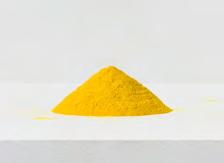
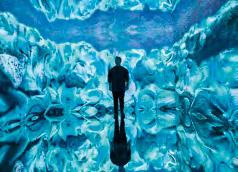
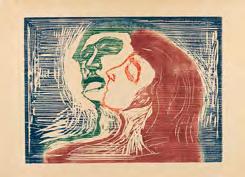

Chipperfield building, exhibition space
DEAR READER
The Kunsthaus Zürich is many institutions in one. Our museum unites more than eight centuries of art history in four different building sections. It offers a multidimensional journey through time and space. The collection spans an arc from the Middle Ages to the present day. From Rembrandt via Monet and Manet, Munch and Giacometti to Sonja Sekula and Sylvie Fleury. The programme for 2025 boasts everything from the iconic Vincent van Gogh in dialogue with contemporary artist Matthew Wong, the adventurous sculptures of Swiss hero Roman Signer and the conceptual work of Brazilian Lygia Clark, to the playful installations of Monster Chetwynd. The Kunsthaus serves up an extensive menu of art forms, from painting and murals to video and film, and from the Gates of Hell (Rodin) to the Pixel Forest (Pipilotti Rist). We proudly present artworks that captivate us with their beauty, next to exhibitions that ‘itch’ and make us reflect on the swirling times we live in and the complex history that precedes us.
Our 2025 programme presents all these variations and nuances, with a particular emphasis on curiosity and joy. The old and familiar is paired with the new and unexpected. This is your invitation to travel across several artistic continents.
We hope you enjoy the ride!
Ann Demeester, Director –on behalf of the entire Kunsthaus team
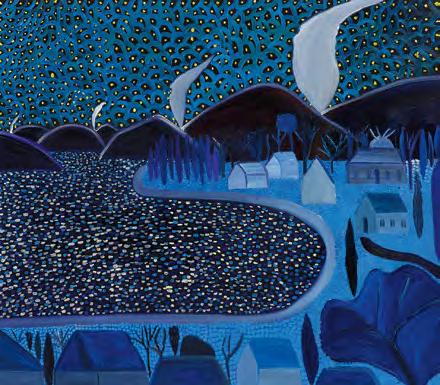
MATTHEW WONG –VINCENT VAN GOGH
Painting as a Last Resort
Shortly before his death at a young age, the Chinese-Canadian artist Matthew Wong (1984 Toronto – 2019 Edmonton) emerged as a phenomenon with his striking landscape paintings. Wong started out as an autodidact and achieved international fame within a remarkably brief space of time.
The main focus of his work is on landscapes of expressively lyrical, yet sometimes melancholy power. The product of his imagination, they were inspired by both traditional Chinese painting and Western art. Wong was especially influenced by Vincent van Gogh (1853 Zundert – 1890 Auvers-sur-Oise), not only in terms of his painting style and choice of motifs, but also in some aspects of
Matthew Wong, Starry Night, 2019 Matthew Wong Foundation, © 2024 ProLitteris, Zurich
25.10.24 – 16.2.25
Pfister building, large exhibition hall
MARINA ABRAMOVI
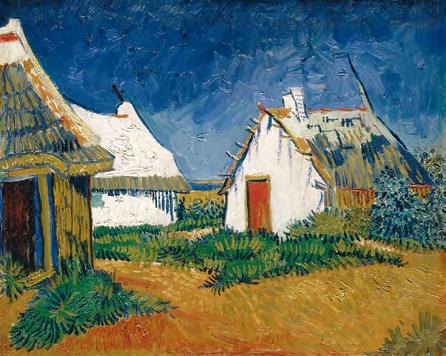
his life. Both artists were self-taught, acquiring their drawing and painting skills without tuition, and both faced mental health issues.
The exhibition brings out the stylistic and biographical parallels between Wong and van Gogh. At its centre are around 40 paintings and drawings by Wong which are receiving their first-ever showing in Switzerland. They are presented in dialogue with a dozen selected van Gogh masterpieces.
The exhibition was developed in collaboration with the Van Gogh Museum Amsterdam and will move on to the Albertina in Vienna.
Marina Abramovic´ is one of the most important contemporary artists. Born in Belgrade in 1946, she has written (art) history with her legendary performances. The exhibition at the Kunsthaus Zürich presents the life’s work of this unique artist and shows key examples from every period of an artistic career spanning more than 55 years.
Marina Abramovic´ has always probed the boundaries of her own physical and mental endurance – and invited the public to share those experiences with her. As Abramovic´ herself puts it: ‘I am a performance artist. I want to create something the public can interact with, that it can feel, that it can experience in its own personal way, with its own kind of energy.’
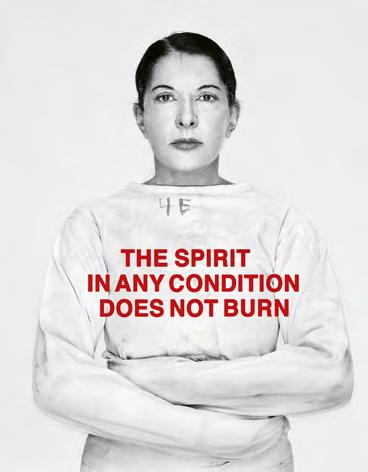
Vincent van Gogh, White Cottages at Saintes-Maries, 1888 Kunsthaus Zürich, Donated by Walter Haefner, 1995
Marina Abramovic´, The Spirit in Any Condition Does Not Burn, 2011 © Courtesy of the Marina Abramovic´ Archives / 2024, ProLitteris, Zurich
15.11.24 – 9.2.25
Moser building, cabinet
ALBERT WELTI
Imprints of the Fantastic
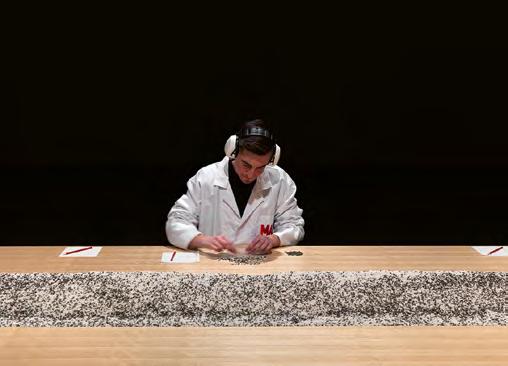
Marina Abramovic´'s first major retrospective in Switzerland is being developed in close collaboration with the artist. It is a cooperation with the Royal Academy in London, the Stedelijk Museum in Amsterdam and the Kunstforum in Vienna.
Albert Welti’s paintings, most notably ‘Walpurgis Night’, are familiar favourites among Kunsthaus regulars. What is less known is that in his prints, Welti (1862 Zurich – 1912 Bern) intensively explored the theme of perception heightened through the visionary. The Kunsthaus possesses a broad spectrum of graphic works by Welti, from the imaginative playfulness that he lived out in commercial prints, to large-format masterpieces of the imagination. The ‘eerily demonic streak’ that characterizes many of these works may be due in part to the influence of his teacher Arnold Böcklin.
Our exhibition places Welti’s graphic oeuvre, with its frequent references to earlier art, in the broader panorama of fantastic art from 1750 to 1900.
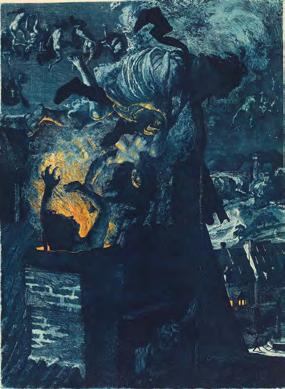
Marina Abramovic´, Counting the Rice, 2015 Live performance with audience, MONA, Tasmania © Courtesy of the Marina Abramovic´ Archives / 2024, ProLitteris, Zurich
Albert Welti, Walpurgis Night (Witches’ Sabbath), 1897 Kunsthaus Zürich
Chipperfield building, collection
A FUTURE FOR THE PAST
The Bührle Collection: art, context, war and conflict
In autumn 2023, the Kunsthaus Zürich opened a new exhibition of the Emil Bührle Collection. Between 1936 and 1956, the arms manufacturer Emil Bührle had put together a large collection of art which, on his death, comprised 633 works from the Middle Ages to Classical Modernism. Its main focus is on Impressionist painting. The exhibition is changing and evolving over a number of phases, and is scheduled to remain on show until October 2025. The presentation was conceived by an interdisciplinary team and aims to include and juxtapose a range of interpretations and perspectives. The controversy surrounding this collection attaches to a number of works that were formerly owned by Jewish people persecuted by the Nazis. A further cause of debate is the fact that Bührle acquired his fortune as an entrepreneur, with much of his wealth coming from arms sales to countries including Nazi Germany. In addition to displaying the art, illuminating the context and portraying the actual fates of former
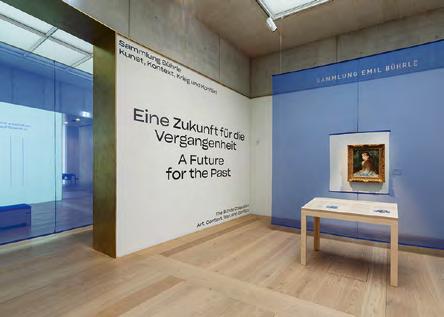
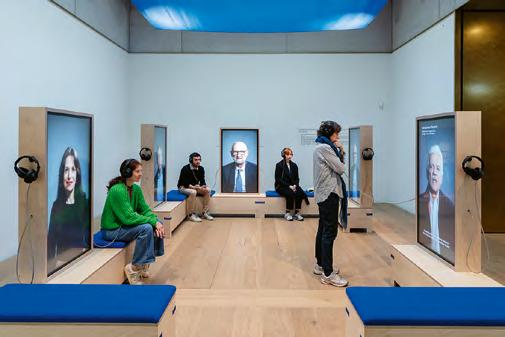
owners, the exhibition creates space for reflection and an active dialogue with the public. It also considers the decades-long ties between the Zürcher Kunstgesellschaft (the patron association of the Kunsthaus Zürich) and Bührle. Another topic is the current debate in Switzerland on the subject of provenance research, along with just and fair solutions for dealing with ‘Nazi-looted art’. This term refers to cultural property which the Nazis confiscated from its mostly Jewish owners between 1933 and 1945, but includes forced sales of what have previously been referred to as ‘flight assets’, i.e. works sold by the owners under duress outside the area of Nazi rule. The exhibition in its current form incorporates responses to two relevant events. The first was the removal of five works from the exhibition in mid-June 2024 at the behest of the Bührle Foundation, for which solutions are to be sought with the legal heirs of former Jewish owners. The second was the publication of the report by Swiss historian Raphael Gross and his team at the end of June. Gross had been commissioned by the City and Canton of Zurich and the Zürcher Kunstgesellschaft to review the Bührle Foundation’s provenance research and, on that basis, make recommendations on how to deal with certain works.
Photos © Franca Candrian, Kunsthaus Zürich
Pfister building, large exhibition hall
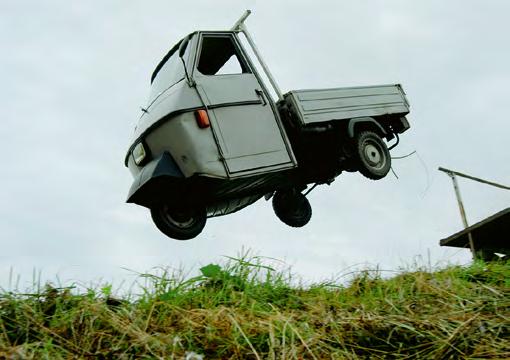
ROMAN SIGNER
Roman Signer (b. 1938 Appenzell) is one of Switzerland’s most prominent contemporary artists. His humorous works, which invite us to rediscover the world and its everyday objects in a refreshingly playful way, have gained him an international reputation. In a career spanning more than five decades, his work has been shown in major museums and groundbreaking exhibitions around the globe. The Kunsthaus Zürich now stages a unique retrospective of his oeuvre in the large exhibition hall.
The artistic experiences that Roman Signer constructs for us are a fascinating blend of process, play, experimentation and amazement. Elemental physical phenomena, along with the containment and release of energy, play a central role, as does the irresistible humour that characterizes his constantly surprising arrangements.
The exhibition incorporates works from every stage of Signer’s artistic career. Rather than being designed as a traditional retrospective it functions as an overall installation, a spatial composition that brings the works into dialogue with each other, highlighting new relationships between objects and ideas.
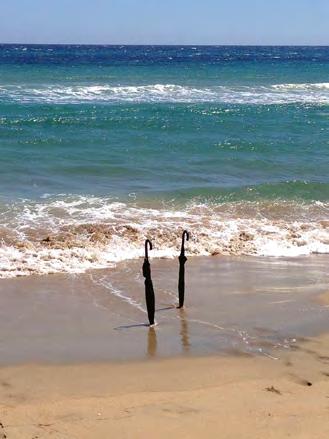
Roman Signer, Two Umbrellas, 2016 Nuoro, Sardinia, Italy, photo: Barbara Signer, © Roman Signer
Roman Signer, Piaggio on Jump, 2003 Ski jump, Chochołów, Poland, photo: Rudolf Steiner / videocompany.ch, © Roman Signer
Chipperfield building, exhibition space
MONSTER CHETWYND
Monster Chetwynd (b. 1973 London, lives and works in Zurich), also previously known under the names Lali, Spartacus and Marvin Gaye Chetwynd, shot to international fame in the 2000s with her excuberant performances that recall medieval mystery plays and carnival theatre and draw on themes from both art history and popular culture. In 2012, she became the first performance artist to be nominated for the prestigious Turner Prize and is today one of the leading figures working in the field of contemporary performance.
However, Chetwynd’s artistic production is much broader, encompassing disciplines including painting, sculpture, installations and films. Her artistic practice draws on a vast range of cultural sources and combines them into something new. Humour, curiosity and collaboration are key.
The exhibition, created in collaboration with curator Raphael Gygax, offers the first comprehensive overview of Chetwynd’s work in Switzerland. More than 60 pieces from the last 25 years will be combined with an immersive exhibition architecture.
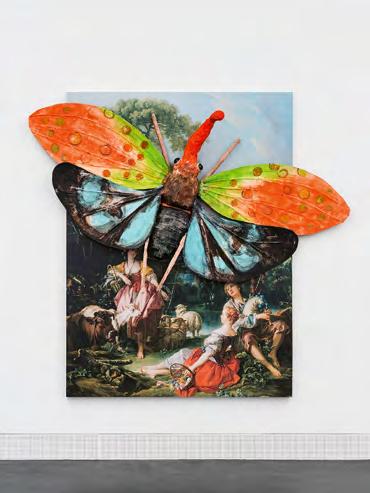
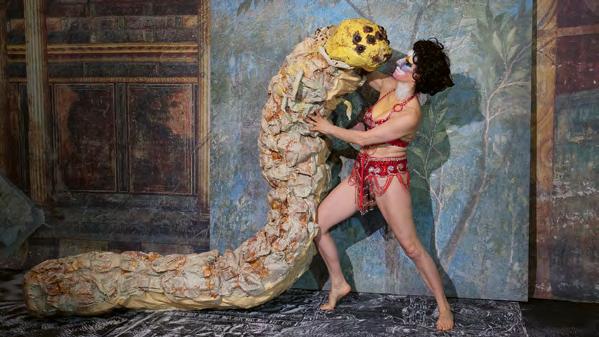
Monster Chetwynd, Lantern Fly (Pastoral), 2021 Courtesy of the artist and Galerie Gregor Staiger, Zurich / Milan, © Monster Chetwynd
Monster Chetwynd and Esther Teichmann, Phantasie Fotostudio II, 2018
© Monster Chetwynd and Esther Teichmann. Courtesy of the artists. Photo: Esther Teichmann
SUZANNE DUCHAMP
Suzanne Duchamp (1889 Blainville-Crevon – 1963 Neuilly-sur-Seine) left behind a dazzling body of work that has found its way into some of the world’s most famous collections but is still known only to specialists. The sister of Marcel Duchamp, Raymond Duchamp-Villon and Jacques Villon, she was in the vanguard of her times and influenced art history as an exceptional Dada artist.
Duchamp’s visual idiom is subtle, delicate, cryptic, humorous and aesthetically appealing. The last large exhibition devoted to her work was in 1983 at the Centre Pompidou in Paris and was also presented at Kunsthalle Bern in a show entitled ‘Tabu Dada’. In collaboration with guest curator Talia Kwartler, the Kunsthaus stages the first retrospective in honour of a multifaceted artist who has for so long remained in her brother’s shadow. Zurich, the birthplace of the Dada Movement, seems the ideal place to highlight Duchamp’s adventurous spirit. Many of the approximately 60 works on display are being shown in public for the first time.
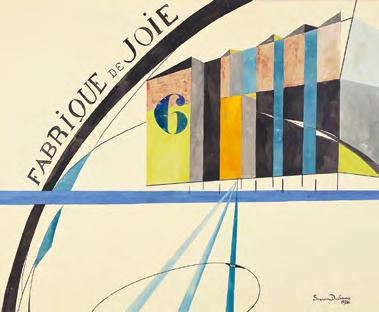
Chipperfield building, exhibition space
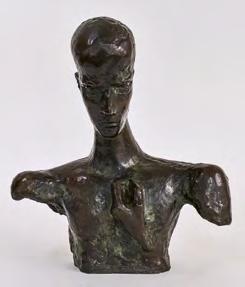
O FELLOW HUMAN!
WILHELM
LEHMBRUCK –
THE FINAL YEARS
In dialogue with Yves Netzhammer
Wilhelm Lehmbruck (1881 Duisburg – 1919 Berlin), one of the most important sculptors of his generation, moved to Zurich from Germany in 1916. During the First World War, the city became a meeting place for international artists. It was in this inspiring environment that Lehmbruck reached another peak of his powers: his last works in particular reveal him to be a visionary, charting out a new course with his ‘mental’ sculptures.
Joining him in a visual dialogue is the contemporary Swiss artist Yves Netzhammer (b. 1970 Schaffhausen), whose drawings, spatial installations and computer-generated video films are a captivating blend of corporeal appearance and pictorial narrative. Netzhammer will conceive the overall spatial design of the exhibition and develop new works in resonance with Lehmbruck.
The exhibition is a cooperation with the Kunstmuseum Moritzburg in Halle (Saale), in collaboration with the Lehmbruck Museum, Duisburg.
Suzanne Duchamp, Joy Factory, 1920 Galerie 1900 – 2000, Paris, © Suzanne Duchamp / 2024, ProLitteris, Zurich
Wilhelm Lehmbruck, Head of a Thinker, 1918 Lehmbruck Museum, Duisburg, photo: Dejan Saric
MAKING AN IMPRESSION!
Masterpieces on paper from Albrecht Dürer to Dieter Roth
The Collection of Prints and Drawings at the Kunsthaus is a true treasure trove, hardly known to its visitors. In 2025 we highlight a selection of remarkable works from the extensive holdings of prints. Printing is far more than simply a reproductive medium. The use of printer’s ink and the play of line and surface invariably also bring unique qualities to the fore.
Our selection comprises artists whose works literally ‘made an impression’ on generations that followed, by setting standards in the technique of printmaking: figures from Dürer to Munch and Kollwitz, and from Rembrandt and Goya to Roth. While this ‘tour d’horizon’ also covers all formats, from XS to XL, we deliberately avoid a hierarchical categorization of works according to size. The fact is that quite often, a print’s appeal only becomes evident when you zoom in on the minute details.
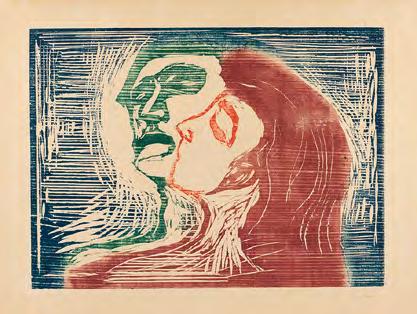
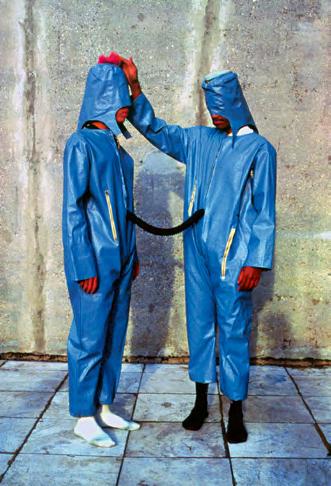
LYGIA CLARK
Brazilian artist Lygia Clark (1920 Belo Horizonte – 1988 Rio de Janeiro) radically redefined the concept of art and is one of the most important art practitioners in South America. One of the leading figures in the Neoconcretismo movement established in Rio de Janeiro in 1959, she encouraged a bodily experience of art that involves people in the work and makes them part of it. With installations that visitors could activate, walk through and touch, she challenged conventional notions of sculpture and expanded art into a holistic and sensual experience.
Despite the pre-eminence of Abstract Expressionism and later Pop Art, Clark was remarkably successful in asserting her
Lygia Clark, The I and the You: Clothing – Body – Clothing series, 1967 Cultural Association ‘The World of Lygia Clark’, © The estate of Lygia Clark
Edvard Munch, Head to Head, 1905 Kunsthaus Zürich, 1950
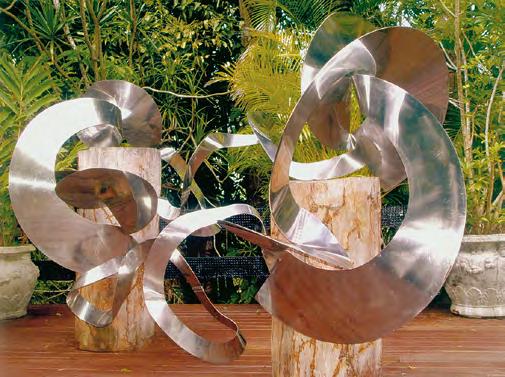
unconventional ideas during Brazil’s military dictatorship from 1964 to 1985 – a time when artistic freedom was under threat. In this exhibition, the first retrospective in a German-speaking country, we celebrate her unconventional and still highly exciting historical work. She herself said: ‘For me, making art is about developing as a person, which is the most important thing of all. Art should not seek to emulate a name or any kind of concept.’ Today, in an age of digital transformation and globalization mingled with self-alienation, her oeuvre speaks more than ever to all the senses.
A retrospective in cooperation with the Neue Nationalgalerie in Berlin in collaboration with the Associação Cultural Lygia Clark in Rio de Janeiro.
The exhibition is accompanied by a separate presentation in collaboration with Museum Haus Konstruktiv, which focuses on links between Switzerland and Brazil and, in particular, the influence of the Zurich Concrete artist Max Bill on Lygia Clark and her generation, and their emancipation from him.
COLLECTION
Exhibitions and projects
NEW EXHIBITION HUBERT LOOSER COLLECTION
From 29 November 2024
Chipperfield building, collection
The Hubert Looser Collection is unique in Zurich, with exceptional works of Abstract Expressionism, Minimal Art and Arte Povera – from Agnes Martin and Donald Judd to Cy Twombly and Lucio Fontana. The collection of the Swiss entrepreneur and philanthropist has been on display in the Kunsthaus since the opening of the Chipperfield building in 2021.
As a collector, Hubert Looser is particularly interested in the dialogue between American and European art, which his collection brings out through exciting combinations.
The new exhibition which opens at the end of November 2024, features Willem de Kooning as a main artist of the collection, and gives prominence to European figures, such as Anselm Kiefer and Sean Scully. Giuseppe Penone, one of the key artists of Arte
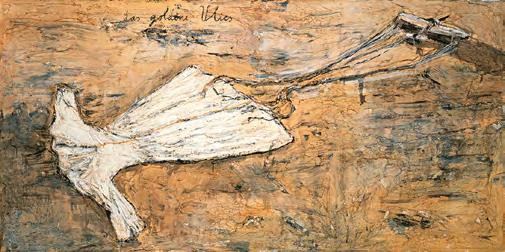
Lygia Clark, Trepante versão 1, 1965 Jones Bergamin, © The estate of Lygia Clark
Anselm Kiefer, The Golden Fleece, 1997
Hubert Looser Foundation, on permanent loan at Kunsthaus Zürich
© Anselm Kiefer
COLLECTION
Exhibitions and projects
Povera, plays a major role, his works taking centre stage in two rooms and being presented in the form of sculptures, an installation and drawings.
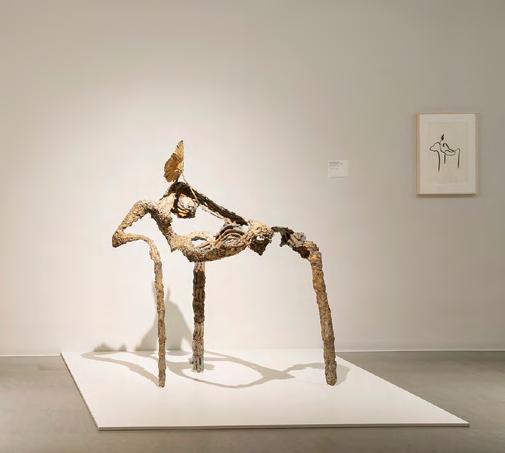
COLLECTION
Exhibitions and projects
RECOLLECT!
What would a museum be without artists? Their works are the core and backbone of the institution. But artists don’t just produce art: they also look at the work of other artists and draw inspiration from it. With the ‘ReCollect!’ series, the Kunsthaus is inviting artists to present their take on the collection in dialogue with their own works, thereby interrogating and reshaping the established canon. This multi-perspectival approach to the collection creates a refreshingly inspiring polyphony that is in tune with the zeitgeist.
YTO BARRADA
From 13 December 2024, Müller building, ground floor
In her contribution to ReCollect!, the French-Moroccan artist Yto Barrada (b. 1971 Paris) stages an encounter between her own video installations, collages and textiles and a variety of works from the Kunsthaus Collection, all created in 1971, the year of her birth. Using associative techniques, she weaves them together into a colourful, spatial tapestry in which personal stories, historical processes and natural phenomena are explored.
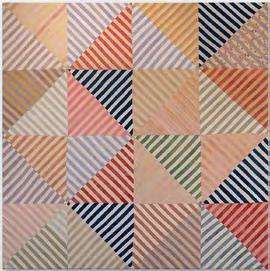
Giuseppe Penone, Large Vegetal Gesture no. 1, 1983
Hubert Looser Foundation, on permanent loan at Kunsthaus Zürich © 2024, ProLitteris, Zurich
Yto Barrada, Untitled (After Stella, Sidi Ifni III) Four Times Sidi Ifni, 2022 Courtesy of the artist and Sfeir-Semler Gallery Beirut/Hamburg, © Yto Barrada
COLLECTION
Exhibitions and projects
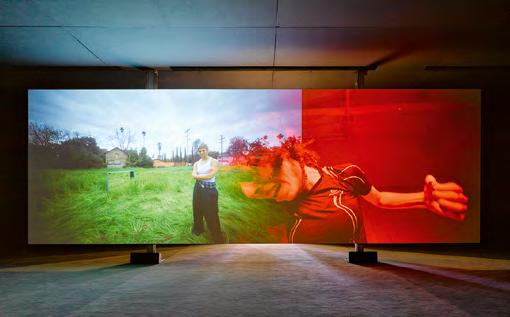
WU TSANG
From early summer 2025, Moser building, 1st floor
US artist Wu Tsang (b. 1982 Worcester) moves freely between theatre, dance, film and visual art. For ReCollect!, she explores the legacy of the Swiss dancer, choreographer and educator Suzanne Perrottet (1889 Rolle – 1983 Zurich). Perrottet was one of the founders of modern expressive dance, who believed that rhythmic movement could nurture the development of every human being and stressed the expressive power of natural movements and gestures, of sounds and words. Dance annotations by Perrottet from the Kunsthaus Collection serve as the basis for an installation that asks questions about the status and inheritance of dance annotations, and the intimate cooperations and collective movements of artists.
COLLECTION
Exhibitions and projects
WOLFGANG LAIB
From 2 October 2025, Müller building, 1st floor
German artist Wolfgang Laib (b. 1950 Metzingen) has been developing a highly individual artistic language since back in the late 1970s. Utilizing natural substances and materials such as pollen, wax, milk and stone, he creates works that, in Harald Szeemann’s words, ‘reveal an unfathomable plethora of additional internal spaces by means of the tiniest sculptural gestures’. Over recent years, Laib has frequently inserted his works into famous historical church spaces in Italy, where they came up against artworks from the 6th century to the Renaissance. Laib now transposes those kinds of ‘transhistorical’ encounters to the museum context as part of ReCollect! He creates new networks of meaning between his own work and outstanding pieces from the Kunsthaus Collection, from the Middle Ages to the 20th century, and thus acts as a catalyst for new perspectives on the historical collection of the museum.
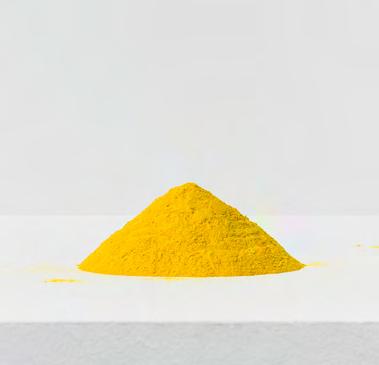
Wolfgang Laib, Pollen, 2015
Photo: Jens Ziehe, courtesy of the artist and Buchmann Galerie, © Wolfgang Laib
Wu Tsang, We Hold Where Study, 2017 Exhibition view, Kunsthalle Münster, courtesy of the artist and Galerie Isabella Bortolozzi, Berlin, photo: Roman Mensing, © Wu Tsang
COLLECTION
Exhibitions and projects
REFIK ANADOL
From 18 January 2025, Chipperfield building, collection
AI, Big Data and the quantified self: the digital transformation is the greatest challenge of our times. Computers and digital technologies now shape every area of our lives and have a huge impact on artistic practice.
Refik Anadol (b. 1985 in Istanbul, lives in Los Angeles) is one of the leading pioneers of AI-based art. At the Kunsthaus, he will be presenting the spectacular ‘Glacier Dreams’ (2023), an immersive digital space based on thousands of photos of glaciers. With this project, supported by the Swiss private bank Julius Baer, in which the artist also collected his own data on glaciers in Iceland, Anadol uses AI to create poignant experiences of the melting ice beyond scientific research, and a deeper awareness of climate change.
Donated by the Swiss private bank Julius Baer.
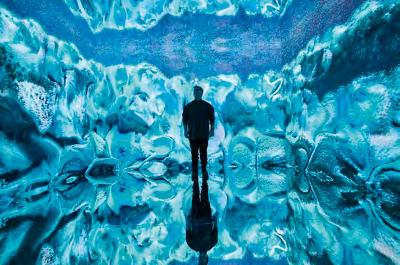
COLLECTION
The permanent collection
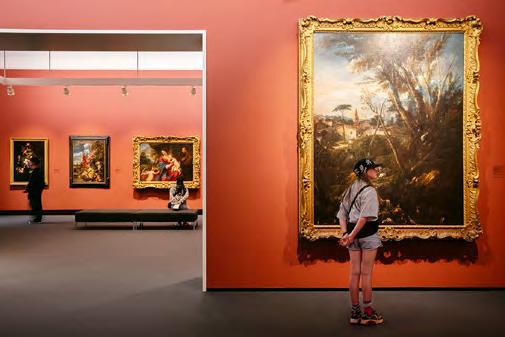
THE COLLECTION
In addition to its extensive exhibition programme, the Kunsthaus boasts another invaluable treasure: its permanent collection, a vast accumulation of artworks from the 13th century to the present day, many of global importance. They include paintings, sculptures and site-specific installations, while the Collection of Prints and Drawings comprises works on paper, photographs, videos and digital media.
Old Masters
The collection opens with works by the European Old Masters, including precious medieval sculptures and paintings from a number of European countries. Renaissance and Baroque paintings, notably by Italian artists, along with Dutch painting, in the form of works by van Goyen, Rembrandt and Ruisdael follow. 18th-century Venetian painting, from Tiepolo to Guardi is well represented. Post-Reformation Zurich painting leads to the brilliant eccentric Henry Fuseli, a key figure in European neoclassicism, as well as major works by Angelika Kauffmann and a group of paintings by the Norwegian Romantic Johan Christian Dahl.
View of the Old Master Collection
COLLECTION COLLECTION
The permanent collection
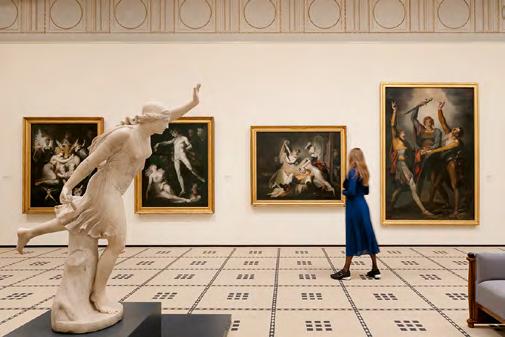
Swiss artists
Swiss painting in the 19th and 20th centuries is especially well represented, with the enchanting landscapes of Rudolf Koller and Robert Zünd, the fantasy worlds of Arnold Böcklin and Albert Welti, and a dense group of works by Albert Anker. The Art Nouveau of Augusto Giacometti and Félix Vallotton leads on to the realistic and avantgarde trends of the 20th century, with artists such as Sophie TaeuberArp and the Zurich Concretists.
The museum hosts exceptionally fine groups of works by Ferdinand Hodler, Giovanni Segantini and Alberto Giacometti, the latter setting up encounters with works by international artists whom he influenced or who were his contemporaries in Paris, including the Surrealists, the École de Paris, Francis Bacon and Rebecca Warren.
From Impressionism to Classical Modernism
French painting is represented in the form of major works by Théodore Géricault, Jean-Baptiste-Camille Corot, Eugène Delacroix, Gustave Courbet and Édouard Manet, and culminates in an impressive group of canvases by Claude Monet, including the celebrated Water Lilies. These, along with Impressionism in the 1870s and the Post-Impressionism of Paul Cézanne and Vincent van Gogh, are on display in the Chipperfield building.
The permanent collection
Among the early modern and modern holdings, key individual works and groups by Pierre Bonnard and Édouard Vuillard, Henri Matisse, Pablo Picasso, Fernand Léger, Constantin Brancusi, Germaine Richier, Marc Chagall, Paul Klee, Wassily Kandinsky and Oskar Kokoschka are a particular attraction. The Kunsthaus Zürich also displays the largest group of paintings by Edvard Munch outside Norway.
The Dada cabinet displays one of the most important collections of works and documents from the Dada movement, which was launched in Zurich in 1916 by artists in exile such as Hugo Ball, Emmy Hennings, Hans Arp, Marcel Janco and Tristan Tzara and cast aside all the conventions of art.
Surrealism, which drew inspiration from Dada, is present in the form of Alberto Giacometti along with works by Max Ernst, Joan Miró, Salvador Dalí, René Magritte and André Masson. Also represented is the geometric constructivism of Piet Mondrian and De Stijl. A further spectacular highlight is an important group of works of Italian ‘Pittura Metafisica’, by artists including Giorgio de Chirico.
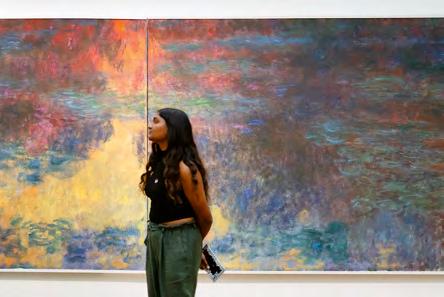
View of Henry Fuseli
Claude Monet, The Water Lily Pond in the Evening, 1914 / 1922 Kunsthaus Zürich, Donated by Emil G. Bührle, 1952
COLLECTION
The permanent collection
From 1945 to the present
The post-war New York School is represented by major artists –Jackson Pollock, Mark Rothko, Barnett Newman and Sonja Sekula –as are European and American Pop Art (David Hockney, Richard Hamilton, Robert Rauschenberg, Jasper Johns, Andy Warhol, Roy Lichtenstein). Particular highlights include Gerhard Richter’s ‘Eight Student Nurses’ from 1966, works by Georg Baselitz and Sigmar Polke, and paintings along with rare original sculptures by Cy Twombly. Photographs, video installations and installations by artists including Sylvie Fleury and Pipilotti Rist bring things into the 21st century.
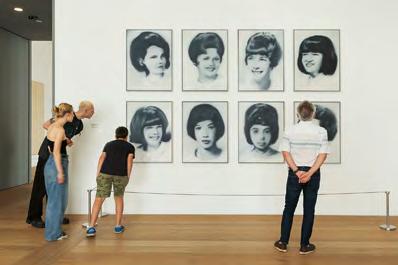
Digilab
Today, computer technology permeates every area of our lives, and the digital transformation is one of the most exciting challenges of our times. In parallel with the construction of a new wing designed by Sir David Chipperfield, the Kunsthaus Zürich therefore launched the project ‘Kunsthaus Digilab’. Artists are invited to create new digital art works or works that reflect on digital transformation, both online and as an analogue installation in one of the collection rooms. The classical exhibition space is thus expanded into the digital realm, while the digital realm radiates back into the collection. digilab.kunsthaus.ch
COLLECTION
The permanent collection
Collections in the Chipperfield building: Merzbacher, Bührle, Looser
Since the extension designed by David Chipperfield opened in 2021, there has been more space for contemporary art. Three major private collections on long-term loan to the Kunsthaus are especially popular with visitors: the groups of Fauvist and Expressionist works that make up the collection of Gabriele and Werner Merzbacher; the Impressionism and early modernism of the Emil Bührle Collection; and American Abstraction and Arte Povera from the Hubert Looser Collection.
Pixel Forest
‘Pixel Forest Turicum’ (2021) by Pipilotti Rist is an immersive installation made up of several thousand LED lights suspended in space on cables to create a magical image forest. Interacting with music, it changes colour and physical form constantly; visitors walk through the room, immerse themselves in the vibrantly coloured light installation and are visually embraced by it. Gabriele and Werner Merzbacher acquired the work as a contemporary extension to their collection, which continues its underlying theme of colour and translates it into a spatial experience.
The collection is available online at digital.kunsthaus.ch

Gerhard Richter, Eight Student Nurses, 1966, Vereinigung Zürcher Kunstfreunde, donated by Hans B. Wyss and Brigitte Wyss-Sponagel, 2021, © Gerhard Richter
Pipilotti Rist, Pixel Forest Turicum, 2021, Gabriele and Werner Merzbacher Collection, on permanent loan at Kunsthaus Zürich, © Pipilotti Rist, courtesy of the artist, Hauser & Wirth and Luhring Augustine / 2024, ProLitteris, Zurich
ART
FOR ALL in the Haefner Foyer and Chipperfield garden
ART FOR ALL
Architect Sir David Chipperfield designed both the monumental lobby and the garden of the new building as public spaces that can be accessed without restriction and free of charge and in which everyone can come face to face with art. Artists from across the globe are invited to show or develop works for these impressive indoor and outdoor spaces, responding to the atmosphere of city and museum. The works, accessible to all for free, will be exhibited for a period of between six months and two years.
PACITA ABAD
From 19 November 2024
Chipperfield building, Haefner Foyer
On her extensive travels, Pacita Abad (1946 Batanes, Philippines –2004 Singapore) found her roots in the realm of textiles. Although she saw herself primarily as a painter, she was fascinated by ‘trapunto’, an old Italian quilting technique. She embellished padded and stitched canvases with pearls, buttons, sequins, stones, shells and fragments of glass to give her works a sculptural dimension.
Between 1981 and 2000, Abad created the large-format ‘Masks and Spirits’ series, which incorporated everything from African masks to Nepalese and Tibetan thangkas. Her ‘trapunto’ paintings, which are chiefly distinguished by their vibrant colours and accumulation of materials, bring together images and experiences from a range of cultures, economies and histories, and underline the strong influence exerted by ‘primitive’ art on Western modernism.
In collaboration with curator Krist Gruijthuijsen, we present a series of works from the ‘Masks and Spirits’ series inspired by the culture of Papua New Guinea.
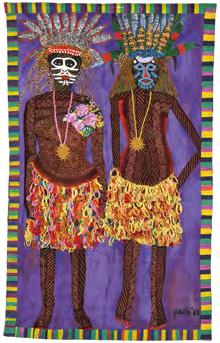
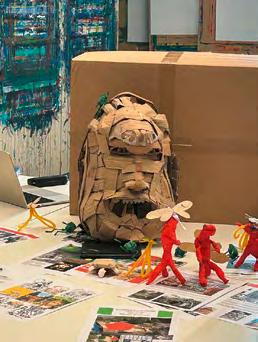
MONSTER CHETWYND
From early summer 2025
Chipperfield building, garden
In parallel with her exhibition in the Chipperfield building, Monster Chetwynd (b. 1973 London) will be the first artist to actually transform the Chipperfield garden into a garden of art. She will be investing the green space with a walk-through sculpture in which the history of monumental sculpture establishes a fascinating connection to science-fiction fantasy films from the 1970s. This project will activate the publicly accessible urban square artistically and act as a playful gateway to the museum. As well as being ‘naturally’ activated by visitors exploring the sculpture’s interior and using it for various purposes (such as a temporary exhibition space as part of young people’s workshops), the installation will also be celebrated over a summer weekend each year, with artistic and playful interventions.
Monster Chetwynd’s first model of the sculpture for the Chipperfield garden
Photo © Raphael Gygax
ART FOR ALL THE GATEWAY FUND
Marvel, experience, explore! The Kunsthaus Zürich is transforming its public spaces into spectacular stages, with site-specific installations and monumental sculptures by internationally renowned artists. Getting things off to a flying start in 2025 is a breathtaking sculpture by the artist Monster Chetwynd in the garden of the Chipperfield building.
The projects are being realized thanks to private donations. You can contribute too: your support of the Gateway Fund helps bring unforgettable, free art experiences to Zurich.
DISCOVER – EXPLORE –EXPERIENCE
Together or individually
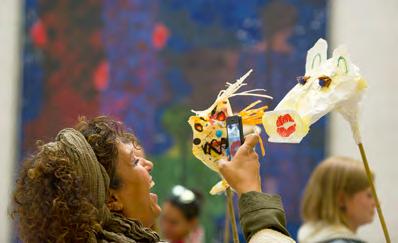
Learn to see with fresh eyes. Find out new things, encounter the unfamiliar, enjoy exciting experiences. Our programme ensures your visit to the Kunsthaus is one you’ll never forget.
Get involved here:
We offer activities for all ages, as individuals and in groups. There’s something for the young and young at heart, for parents with children, and for people between the ages of 66 and 99. Schools can make use of our workshops and dialogue guided tours, made to measure for school classes at every level. Visitors can profit from audioguides for adults and children that offer insights into works from the collection and exhibitions. Tours and talks illuminate arthistorical contexts and explore topical and thematic issues through the works on display. Alternatively, you can let the art on show help you to express your own creativity by attending one of our workshops: from Villa Kun(s)terbunt for the youngest visitors to our digital workshops for anyone interested in the way technology impacts our daily experience and the production of art.
All offerings can also be booked for private groups or corporate events: kunsthaus.ch/en/besuch-planen/angebote. Please contact us for further details.
Photo © Caroline Minjolle
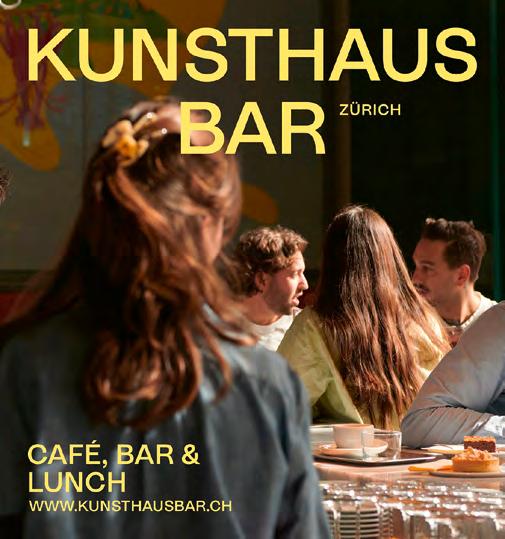
THE ART OF MEZZE
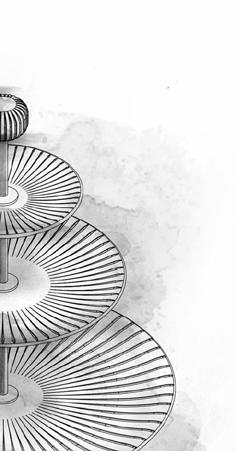
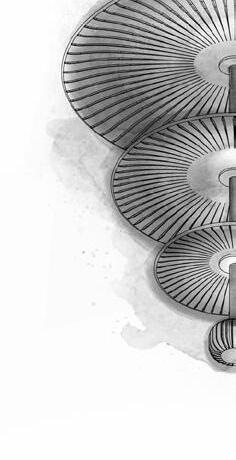
ART EXPERIENCES
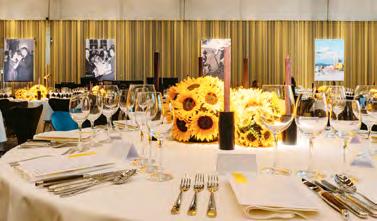
CELEBRATE AND ENJOY
The elegant banquet hall and impressive Foyer in the Chipperfield building, the large auditorium in the Pfister building dating from the 1950s, the Jugendstil Villa Tobler and our gardens with their attractive amenities are the ideal setting for your unforgettable event in the heart of Zurich. We look forward to advising you on plans for your event, including accompanying programmes in the museum.
kunsthaus.ch/en/ museum/vermietung
Give the gift of art
Art fosters creativity, inspires us and enlivens our senses. Enable special experiences with a gift membership of the Kunsthaus to friends, family members or acquaintances. It offers free admission to the museum, invitations to exhibition openings and other benefits. We also offer corporate memberships for companies – a present with a difference for your employees and clients.
en.shop.kunsthaus.ch/ collections/mitgliedschaften
info@kunsthaus.ch, tel. +41 (0)44 253 84 84
Photo © Franca Candrian, Kunsthaus Zürich
Music, theatre and fine arts – all engage, stimulate and inspire. And foster dialogue. That’s why Swiss Re supports cultural activities and encourages creativity and passion. In dialogue with cultural institutions and artists, we enable stimulating programs, opening minds and new horizons. And create a world of inspiration for all. Partnering for progress.
www.swissre.com

TREAT YOURSELF TO A YEAR OF ART!
BECOME A MEMBER
Start benefiting now!
Membership of the Zürcher Kunstgesellschaft comes with a host of attractive advantages: free admission to the museum, invitations to exhibition openings for you and a guest, the Kunsthaus magazine delivered to your home, discounts on events, 10% discount in both shops, the café in the Moser building, the bar in the Chipperfield building, and the Kunsthaus restaurant ‘Bei Moudi am Kunsthaus’, along with free use of the library.
2025 MEMBERSHIP
Individual: CHF 135
Couple: CHF 225
Junior (year of birth 2000 or later): CHF 40
2025 PLUS MEMBERSHIP
Individual: CHF 310 (tax deductible: CHF 120)
Couple: CHF 580 (tax deductible: CHF 200)
Additional advantages of Plus membership: one guest per member each time you visit the museum; public guided tours free; 20 % discount in the shops and for private guided tour bookings.
BECOME A MEMBER
Online (QR code): pay online and receive your membership card by post.
In the museum: register on the tablet at the cash desk, pay in person and you’ll immediately receive a temporary membership card giving you free admission.
More information about membership: kunsthaus.ch/en/museum/mitgliedschaft

We not only care about the Swiss economy, but also about the future of Isaac, Marley, Laura, Luna, Raoul and Noe.
A bank like Switzerland
